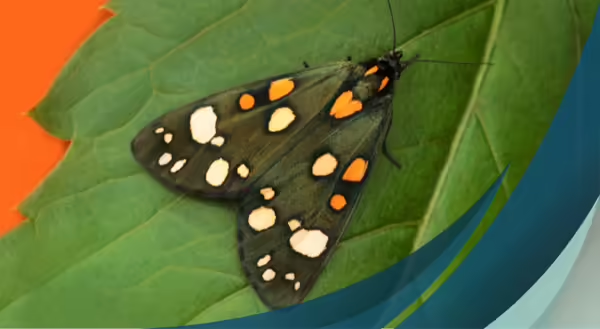
Approximately 35% of our food crops depend on pollinators to produce what we like to eat, according to the U.S. Natural Resources Conservation Service. Everyone knows that honeybees are excellent pollinators, but they’re not the only ones visiting our flowers. While honeybees were imported from Europe as important crop pollinators, there also are an estimated 500 species of bees native to Illinois. These bees use a variety of plants in their search for nectar and pollen. However, bees are not the only ones depending on flowers for food.
Butterflies
A close second in the pollinator popularity contest is butterflies. We all delight in the living artwork that are butterflies as they gracefully float from flower to flower, stopping to probe with their long proboscis – the technical term for their mouth parts that uncoil to search for nectar inside flowers. Many butterflies are specialists, using one or a few limited families of plants on which to lay their eggs. Milkweed and Monarchs are the classic example. Monarchs will only lay eggs on the various Asclepius (milkweed) species. Caterpillars eat the plants, which provide them not only with the nutrition they need, but also the toxic compounds that will help to protect them as adult butterflies. Without milkweeds, we wouldn’t have Monarchs.
Moths
Overlooked because of their often-nocturnal habits and drab colors, moths are a critical part of the food web. Moths are typically attracted to pale-colored flowers, such as those on mountain mint, bee balm, and milkweeds because of their visibility in moonlight. Light pollution, habitat loss, and insecticides are threatening populations of these important insects.
Flies
We don’t typically think of flies as pollinators, but a recent showed they visit almost as many crop species as bees! Additionally, flies are more active than bees at lower temperatures, making them even more important in early spring. Many flies even resemble bees with black and yellow striping! Plants that attract flies will often forego the pretty floral scents, opting instead to smell like rotting meat. Syrphid flies, often called “hover flies,” are especially common in gardens as they have been recorded visiting many different crop species.
Others
Beetles and ants are other common flower visitors. Ants will even help disperse seeds by carrying them back to their nest, eating the sugar-filled seed coating, and then depositing the seed in their “trash piles”, effectively planting them. Other animals also can be seen pollinating flowers, such as bats and birds, especially hummingbirds. Night-blooming plants like bananas and mangoes especially benefit from bat pollination.
Supporting Pollinators
You can support the pollinators in your area by planting a variety of different flowers that bloom at different times through the year. Milkweed, such as butterfly weed, not only adds a bright splash of orange to flowerbeds, but the leaves are food for Monarch caterpillars and the flowers provide nectar to a wide range of pollinators. Fall-blooming asters will provide color in the fall, while also offering end of the season sustenance to butterflies, moths, and bees. And avoiding pesticides, especially while flowers are in bloom, is always appreciated by our buzzy neighbors. If an application is necessary, make sure to spray at night, while most bugs are not active and always follow label directions.
For more information on how you can help pollinators, check out the University of Illinois Extension website. Also, check out the University of Illinois Extension Horticulture YouTube Channel for videos on planting for pollinators and other horticulture topics.
About the author: Jamie Viebach is the University of Illinois Extension Horticulture Educator serving DuPage, Kane, and Kendall counties. Viebach’s primary areas of expertise are in native plants, landscaping, pollinators, and rain gardens.